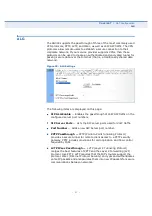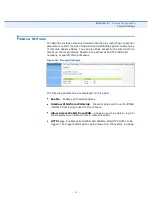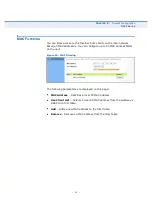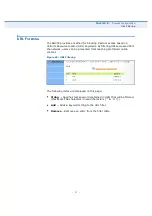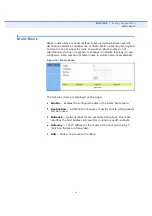
64
ïï
Ê
Ñ
×Ð Í
ÛÌÌ×ÒÙÍ
Voice over Internet Protocol (VoIP) technology is a way of using the
Internet to make phone calls. Phone calls can be tranmitted over the
Internet by encoding a voice call into data packets at one end and then
decoding it back into voice calls at the other end. This encoding and
decoding is from a analog signal (your voice) into a digital signal (data
packets) and then back into an analog signal.
The RG300 uses Session Initiation Protocol (SIP) as the control
mechanism that sets up, initiates, and terminates calls between a caller
and a called party. The SIP messaging makes use of
Proxy,
Redirect,
and
Registration
servers to process call requests and find the location of
called parties across the Internet. When SIP has set up a call between two
parties, the actual voice communication is a direct peer-to-peer connection
using the standard Real-Time Protocol (RTP), which streams the encoded
voice data across the network.
You can make VoIP calls by connecting a regular phone to one of the
RG300
s RJ-11 Phone ports. The RG300 allows up to two RJ-11 Phone ports
to be configured separately with different settings.
The VoIP configuration pages include the following options:
SIP Account
on page 65
SIP Settings
on page 66
Speed Dial
on page 67
Dial Plan
on page 68
Call Feature
on page 70
Phone Settings
on page 72
Codecs
on page 73


